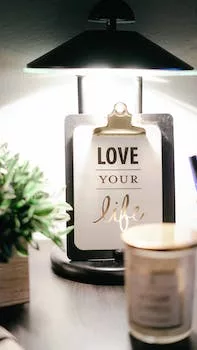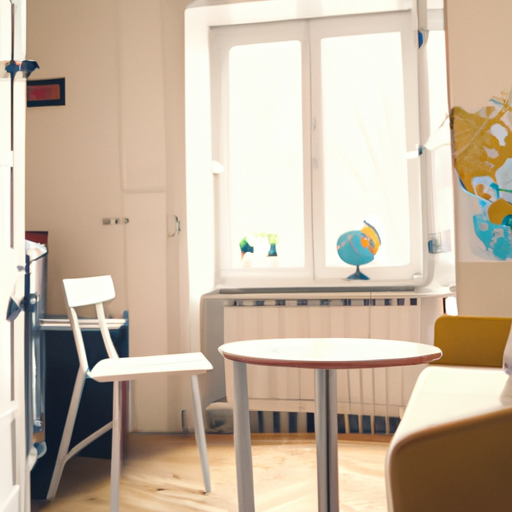Enhancing Productivity through Aesthetically Pleasing Spaces
The impact of good design on our daily lives cannot be overstated. It is a powerful force that shapes our experiences, influences our emotions, and ultimately, enhances our productivity. A well-designed space can inspire creativity, foster collaboration, and promote a sense of well-being. In contrast, a poorly designed space can lead to frustration, inefficiency, and even physical discomfort. As such, it is essential to recognize the importance of aesthetically pleasing spaces in our homes, workplaces, and public areas, as they play a crucial role in our overall productivity and well-being.
One of the most significant ways that good design can enhance productivity is by creating an environment that is conducive to focus and concentration. A well-organized space, free from clutter and distractions, allows the mind to settle and engage fully with the task at hand. This is particularly important in the workplace, where employees are often required to juggle multiple tasks and responsibilities. A clean, streamlined workspace can help to minimize distractions and promote a sense of calm, enabling workers to concentrate more effectively and complete tasks more efficiently.
In addition to promoting focus, good design can also foster creativity and innovation. Aesthetically pleasing spaces that incorporate elements of nature, such as plants, natural light, and organic materials, have been shown to stimulate the brain and encourage creative thinking. This is particularly important in industries that rely on innovation and problem-solving, such as technology, design, and marketing. By creating an environment that is visually appealing and inspiring, companies can help to cultivate a culture of creativity and drive innovation within their teams.
Another way that good design can enhance productivity is by facilitating collaboration and communication. Open-concept workspaces, for example, encourage employees to interact with one another and share ideas more freely. This can lead to increased innovation, as well as improved problem-solving and decision-making. Similarly, well-designed public spaces, such as parks and plazas, can promote social interaction and foster a sense of community, which can contribute to overall well-being and happiness.
Good design can also have a significant impact on our physical health and well-being. Ergonomically designed furniture, for example, can help to prevent strain and injury, while also promoting proper posture and comfort. This is particularly important for individuals who spend long hours sitting at a desk or working on a computer. A comfortable, well-supported workspace can help to minimize the risk of developing chronic pain and discomfort, which can ultimately lead to decreased productivity and absenteeism.
Finally, aesthetically pleasing spaces can have a profound effect on our emotional well-being. Research has shown that individuals who work in well-designed environments report higher levels of job satisfaction, as well as reduced stress and anxiety. This is likely due to the fact that visually appealing spaces can evoke positive emotions and promote a sense of calm and relaxation. In turn, this can lead to increased motivation, engagement, and overall productivity.
In conclusion, the impact of good design on our daily lives is far-reaching and multifaceted. By creating aesthetically pleasing spaces that promote focus, creativity, collaboration, and well-being, we can enhance our productivity and overall quality of life. As such, it is essential for individuals, businesses, and communities to prioritize good design and invest in creating environments that are both functional and visually appealing. By doing so, we can harness the power of good design to improve our daily lives and contribute to a more productive, innovative, and healthy society.
The Psychological Benefits of Good Design in Everyday Objects

The impact of good design on our daily lives is often underestimated, as we tend to take for granted the objects and spaces that surround us. However, the psychological benefits of good design in everyday objects are significant and can greatly contribute to our overall well-being and happiness. In this article, we will explore the various ways in which good design can positively affect our mental state, and how it can ultimately lead to a more fulfilling and enjoyable life.
To begin with, it is important to understand that good design is not merely about aesthetics or visual appeal. While these aspects are certainly important, good design goes beyond mere appearance and encompasses functionality, ergonomics, and sustainability. In other words, a well-designed object should not only look good but also be easy to use, comfortable, and environmentally friendly. By meeting these criteria, good design can greatly enhance our daily experiences and contribute to our overall satisfaction with life.
One of the most significant psychological benefits of good design is its ability to reduce stress and promote relaxation. In today’s fast-paced world, we are constantly bombarded with information and stimuli, which can lead to feelings of overwhelm and anxiety. However, well-designed objects and spaces can help to counteract these negative emotions by providing a sense of order and harmony. For example, a clutter-free and organized living space can help to create a calming atmosphere, allowing us to unwind and recharge after a long day. Similarly, ergonomic furniture and tools can help to minimize physical discomfort and strain, further contributing to our overall sense of well-being.
Another important aspect of good design is its ability to foster positive emotions and enhance our mood. Research has shown that certain colors, shapes, and patterns can evoke specific emotional responses, and designers can use this knowledge to create objects and spaces that promote feelings of happiness, tranquility, or even excitement. For instance, incorporating natural elements such as plants and natural light into our living spaces can help to create a more uplifting and inspiring atmosphere. Additionally, the use of playful and whimsical design elements can inject a sense of joy and wonder into our daily lives, making even mundane tasks more enjoyable.
Good design can also contribute to our sense of self-esteem and personal identity. When we surround ourselves with well-designed objects that reflect our tastes and values, we are more likely to feel a sense of pride and ownership in our environment. This, in turn, can boost our confidence and self-worth, as we feel that we are living in a space that truly represents who we are. Furthermore, by investing in high-quality, well-designed products, we are also making a statement about our commitment to sustainability and responsible consumption, which can further enhance our sense of self-respect and integrity.
Finally, good design can also facilitate social connections and foster a sense of community. Well-designed public spaces, such as parks, plazas, and community centers, can encourage social interaction and create opportunities for people to come together and engage in shared activities. Similarly, thoughtfully designed homes and workplaces can promote collaboration and communication, leading to stronger relationships and a greater sense of belonging.
In conclusion, the psychological benefits of good design in everyday objects are manifold and far-reaching. By prioritizing good design in our lives, we can not only enhance our daily experiences but also promote our overall well-being and happiness. As such, it is essential that we recognize the value of good design and strive to incorporate it into all aspects of our lives, from the products we use to the spaces we inhabit.
How Effective Design Solutions Improve Health and Well-being
The impact of good design on our daily lives cannot be overstated. From the layout of our homes to the design of our cities, effective design solutions have the power to improve our health and well-being in numerous ways. In this article, we will explore how good design can enhance our lives by promoting physical activity, reducing stress, and fostering social connections.
One of the most significant ways that good design can improve our health is by encouraging physical activity. Research has shown that people who live in walkable neighborhoods with well-designed streets, sidewalks, and public spaces are more likely to engage in regular physical activity than those who live in less walkable areas. This is because well-designed environments make it easier and more enjoyable for people to walk, bike, or engage in other forms of active transportation. In turn, this increased physical activity can lead to numerous health benefits, including reduced risk of obesity, heart disease, and diabetes.
In addition to promoting physical activity, good design can also help to reduce stress and improve mental well-being. One way that this can be achieved is through the incorporation of natural elements into our built environments. Studies have shown that exposure to nature, even in small doses, can have a positive impact on our mood and cognitive function. For example, incorporating green spaces, such as parks and gardens, into urban design can provide residents with a much-needed respite from the hustle and bustle of city life. Similarly, the use of natural materials and the inclusion of plants in interior design can create a calming atmosphere that helps to alleviate stress and improve overall well-being.
Another important aspect of good design is the creation of spaces that foster social connections. Humans are inherently social creatures, and our well-being is closely tied to the quality of our relationships with others. Well-designed public spaces, such as parks, plazas, and community centers, can provide opportunities for people to interact and form connections with their neighbors. These spaces can also host a variety of events and activities that bring people together and strengthen community bonds. In addition, the design of residential buildings can also play a role in fostering social connections. For example, the inclusion of shared amenities, such as communal gardens or rooftop terraces, can encourage residents to interact with one another and form a sense of community.
Furthermore, good design can also have a positive impact on our health by improving the quality of our indoor environments. For instance, the use of natural ventilation and daylighting strategies can help to create healthier indoor air quality and reduce our reliance on artificial lighting. This, in turn, can lead to improved respiratory health and reduced eye strain. Additionally, the use of ergonomic furniture and the thoughtful arrangement of workspaces can help to prevent musculoskeletal disorders and improve overall comfort.
In conclusion, the impact of good design on our daily lives is far-reaching and multifaceted. By promoting physical activity, reducing stress, fostering social connections, and improving the quality of our indoor environments, effective design solutions have the power to enhance our health and well-being in numerous ways. As our society continues to grapple with issues such as obesity, mental health, and social isolation, it is essential that we recognize the role that good design can play in addressing these challenges. By prioritizing the creation of well-designed spaces and environments, we can help to ensure that our communities are not only aesthetically pleasing but also supportive of our overall health and well-being.
Q&A
Question 1: How does good design improve daily life?
Answer 1: Good design improves daily life by enhancing functionality, efficiency, and aesthetics. It simplifies tasks, reduces stress, and creates a more enjoyable and comfortable environment.
Question 2: What are the psychological benefits of good design in daily life?
Answer 2: The psychological benefits of good design include increased well-being, reduced anxiety, improved mood, and a sense of satisfaction. Good design can also foster creativity, productivity, and social interaction.
Question 3: How can good design contribute to sustainability and environmental conservation?
Answer 3: Good design can contribute to sustainability and environmental conservation by promoting efficient use of resources, reducing waste, and minimizing negative environmental impacts. This can be achieved through energy-efficient designs, use of eco-friendly materials, and incorporating principles of reduce, reuse, and recycle.
Conclusion
In conclusion, good design significantly impacts daily life by enhancing functionality, improving efficiency, promoting well-being, and fostering a positive aesthetic experience. It contributes to a better quality of life by addressing the needs and preferences of individuals, ultimately leading to increased satisfaction and overall happiness.


